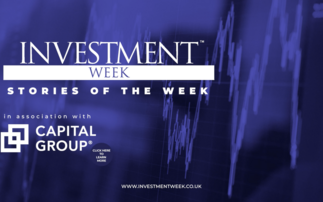
Atoms, bytes and genes represent our way of thinking about the evolution of the physical, digital and natural worlds, which constitute everything around us. Ample evidence suggests that trends in these areas will drive growth in the corporate world for many years to come. We explore these areas in a three-part series.
We live in an increasingly uncertain environment driven by a changing macroeconomic environment and financial market structure. From a macroeconomic standpoint, the 2010s were a unique period characterised by a very stable environment of low growth, low inflation and low interest rates. The pandemic was the trigger to exit this environment; what the new environment is, only time will tell. Meanwhile, financial markets are increasingly driven by passive, algorithmic trading which is creating significant short-term volatility.
Yet, while this environment of increased uncertainty and volatility is confusing a lot of investors, we believe the microeconomic trends are strengthening, and focusing on them makes it easier for us to understand the world. Our framework to analyse these microeconomic trends is via atoms, bytes and genes.
What are Atoms?
From a fund manager point of view, we define Atoms as investments into the physical world. These investments are very diverse and can include industrial production capacities in the form of factories, like Taiwan Semiconductor Manufacturing (TSMC) spending $100bn to build advanced semiconductor fabrication plants in Arizona1, and infrastructure investments like the Ofwat-approved £104bn upgrade to the UK's water system2.
They can also take the form of investments into energy like the €300bn REPowerEU Plan that will support investments into renewables with the aim of doubling the amount of solar energy3.
We see increased focus on investments, and politicians wanting to reindustrialise: the UK government talking about Britain building again; the US Administration is using tariffs to facilitate reshoring; and large technology companies are investing – an example being Microsoft spending $80bn into data centres to meet demand for cloud computing and artificial intelligence (AI)4. We believe overall these investments are only starting to happen given they are propelled by structural themes.
Why is it happening?
A few examples include: The first long-term driver is energy transition which requires a fundamental reshaping of the way we produce and consume energy. From a production perspective, more than 80% of global energy consumption is still coming from fossil fuels, however the IEA estimates renewables accounted for 38% of the growth in energy supply in 2024. On the consumption side, some estimates call for energy-efficiency gains to double to reach Paris Agreement targets. These includes not only renewables but also investments into rail infrastructure, which provides a low-CO₂ alternative to aeroplanes and cars; battery and storage to stabilise the grid and to support renewable penetration.
The second long-term theme is that Western countries are suffering from a chronic under-investment in infrastructure. After the global financial crisis, corporates and governments shunned capital investments and so a decade of underinvestment has now culminated in today's supply side issues – these will require significant investments to correct for this error.
The US being a prime example – according to the American Society of Civil Engineers, the US has a $2.6tr infrastructure investment gap and that underinvestment could cost US$10 trillion in GDP and three million jobs by 20395.
The third was triggered by the pandemic which showed a long period of optimisation has resulted in fragile supply chains that are not able to withstand exogenous shocks and so companies need to rebuild redundancy and resilience. Lastly, geopolitics are also playing a role with increased tensions globally as many countries want to reduce external reliance in strategic sectors.
1.TSMC Intends to Expand Its Investment in the United States to US$165 Billion to Power the Future of AI 2 Ofwat approves £104bn upgrade for the water sector - Water Magazine 3 Two years of REPowerEU: Strengthening Europe's energy resilience - European Commission 4 Microsoft plans to invest $80 billion on AI-enabled data centers in fiscal 2025 | CNN Business 5. Source: OECD
For professional investors only. This material is not suitable for a retail audience. Capital at risk. This is a financial promotion and is not investment advice. Past performance is not a guide to future performance. The value of investments and any income from them may go down as well as up and is not guaranteed. Investors may not get back the amount invested. Portfolio characteristics and holdings are subject to change without notice. The views expressed are those of the author at the date of publication unless otherwise indicated, which are subject to change, and is not investment advice.












